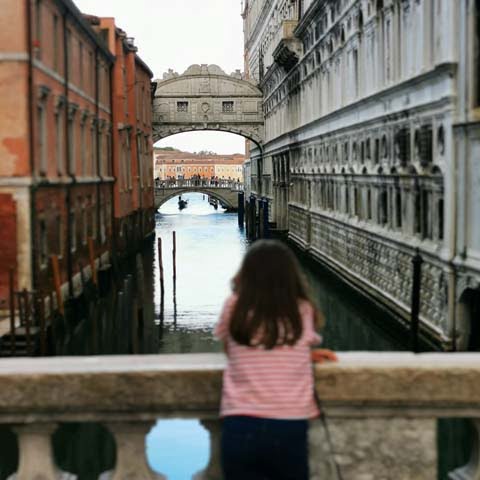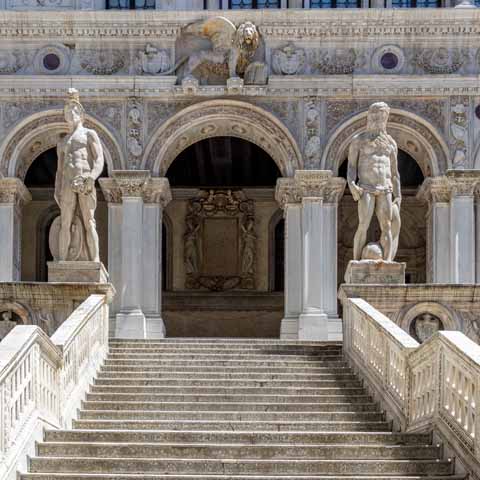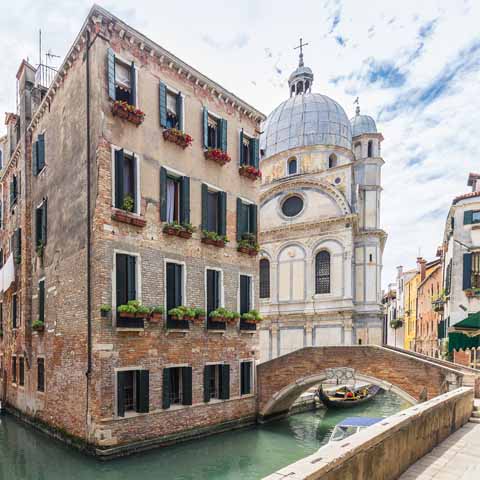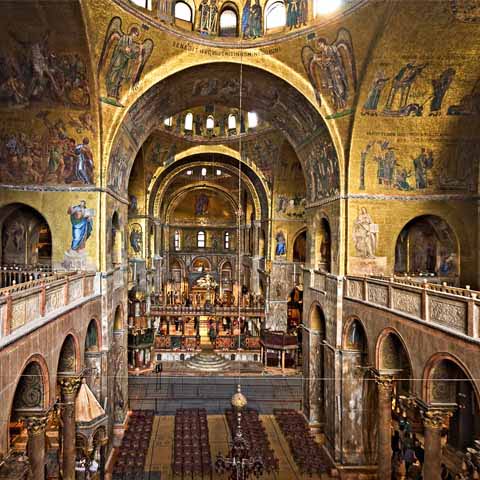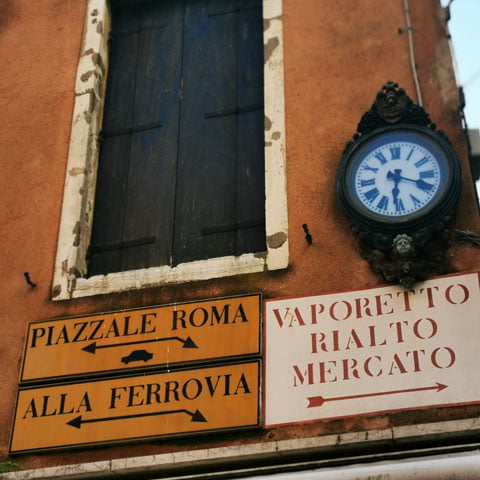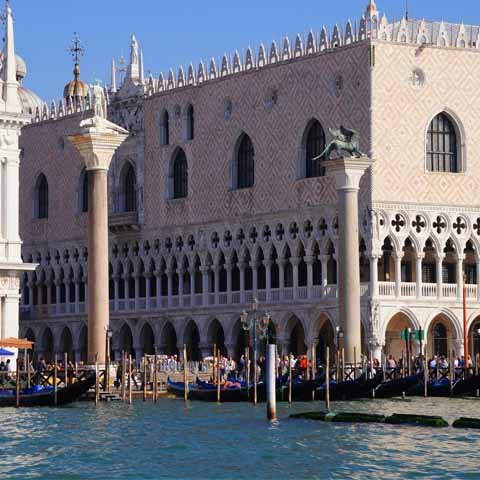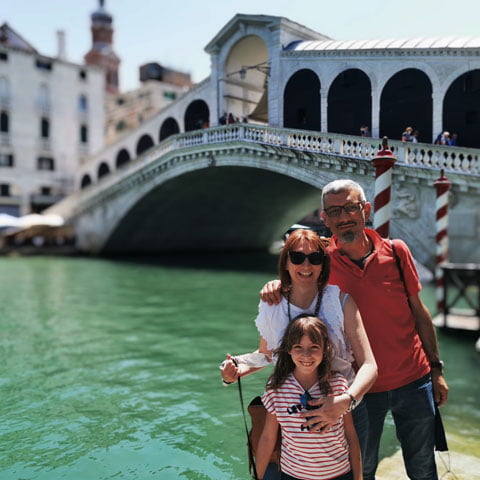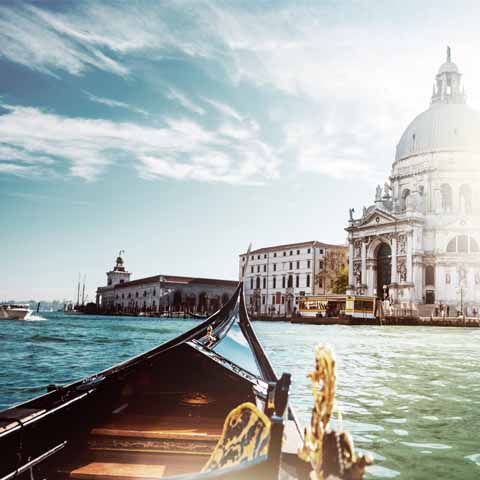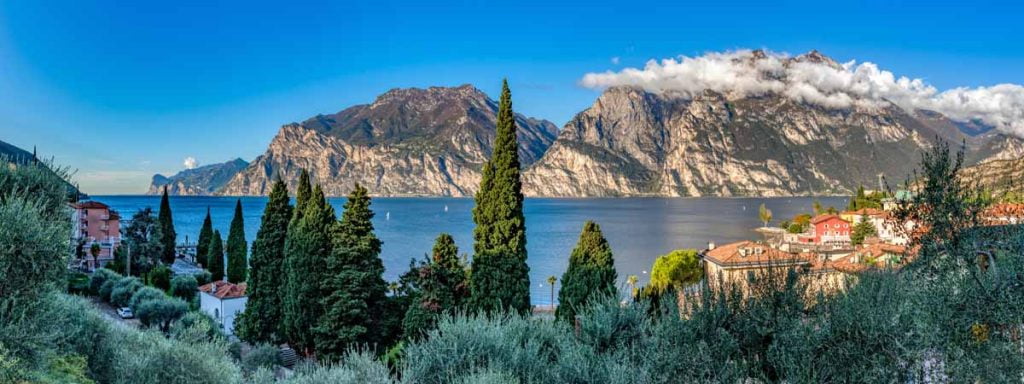Venice’s rich history is linked to its territorial uniqueness. The city is situated on an archipelago formed by
numerous small islands, in an area between the “alive” lagoon, subject to tides, and the “dead” lagoon, an
area where tides have no influence.
The origin of Venice is related to the establishment of some refugee nuclei in Spina, Adria, and Aquileia. Its
geographical position, at the end of the Adriatic Sea and between the continent, the Italian and the Balkan
peninsulas gave Venice a great importance from a political and economic point of view. In fact, for over a
millennium, Venice has been one of the most prosperous European powers and the economic engine
between Europe and the East.
Venice as a whole doesn’t refer to the city alone. In fact, the municipality includes numerous islands or
groups of islands such as Murano, Burano, Torcello, Vignole, Certosa, Mazzorbo, Sant’Erasmo, San
Clemente, San Servolo, Sacca-Sessola and other minor islands in the lagoon, including the two long and
narrow islands Lido and Pellestrina.
The city of Venice also extends on the mainland, where it boasts large urban agglomerations such as
Mestre and Marghera. Besides these two renowned centers, Venice also includes other smaller centers and
the vast port area of Porto Marghera.
Since 1987, Venice and the lagoon have been declared an UNESCO World Heritage Site.
History Of Venice
The first testimonies of settlements in the lagoon are linked to the first barbaric invasions in the fifth
century, although the area has been inhabited for much longer. The growth of population intensified in the
early part of the seventh century, primarily as a result of the Longobard’s interest in the Byzantine
possessions of the territory.
As a result, the islands erected a Byzantine Duchy governed by a magistrate with a residence in Cittanova
and Eraclea. In 726, the Duchy rebelled against the iconoclastic laws of Leone Isaurico, the magistrate. The
rebels elected Orso Ipato as Doge of Venice but in the end, the revolt failed and Venice bowed again to the
supreme authority of the Byzantine Empire.
In the same time, the relation between Venice and Ravenna became tense, and in 742 the seat of the
lagoon was transferred to Malamocco. About 10 years later, in 751, with the fall of Ravenna, Venice
acquired a large autonomy but remained under the Byzantine authority.
In the clash between the Carolingian and the Byzantine empires, Venice deployed with the latter and
resisted the attacks of the French populations between 803 and 810. The strong bond between Venice and
Constantinople was confirmed in 814 when Venice remained in the Byzantine empire.
During this period, the political center of Venice moved to Rialto that, after acquiring the relics of Saint
Mark and the construction of the homonymous basilica, became an important religious center as well. The
connection with the Byzantine empire transformed into a true alliance between the ninth and tenth
centuries thanks to the growth of the city.
In Venice, the doges acquired almost dictatorial powers. However, the political and defensive importance
of Venice goes well beyond the borders of the lagoon. In fact, standing along with the Byzantines, the
Venetians defended the freedom of navigation in the Adriatic against Slavic and Saracen pirates.
Between the end of the tenth century and the beginning of the eleventh, the city gained important
commercial privileges in the Byzantine Empire in exchange for a military alliance. As a result, Venice gained
protection for the transit of its merchants in Italy and Germany and imposed, for defensive purposes, its
control over Dalmatia.
As such, even if formally delegated by the Byzantine emperor, the Doge was actually acting as the head of
an independent state. Furthermore, the defense against the Normans granted great privileges to the
Venetian trade and, in return, the Venetians defended Durres against the Normans.
After a short period of neutrality, Venice took part in the first Crusade and occupied Haifa. By now, the
Byzantine empire began to fear that the city became too powerful and implemented an ambiguous policy
that restrained the privileges acquired in the favor of the rival city of Pisa. This political change led to a
rupture between Venice and the East and the city engaged in military affairs against the Byzantine empire.
These military affairs did nothing but reinforce the power of Venice that gained new privileges and colonies
in the Kingdom of Jerusalem.
The Crusades marked the rise of the great Venetian Empire of Levant with bases in Constantinople, Corinth,
Crete, Cyprus, Ionian Islands, Thessaloniki, Haifa, Sidon, Tiro, and Alexandria, among many other regions.
The management of this vast commercial network was entrusted to private merchants and the role of the
state was exclusive of protecting them. In the meantime, the People’s Assembly emerged as a system of
councils to integrate with the Doge rules.
In the second half of the twelfth century, Venice had to safeguard its independence from German
imperialism. The Venetians were persecuted in the Byzantine empire while Slavs and Hungarians were
threatening the Venetian positions on the east coast of the Adriatic. Moreover, the Genoese and Pisan
traders took the lead in the Levant markets.
To attenuate the crisis, Venice ensured peace between Barbarossa and Pope Alexander III. Significant
constitutional changes took place in the government and the election of the Doge was denied to the people
and reserved to only 40 voters chosen by a special commission.
To rule the city, the Doge was flanked by six councilors, one for each district of Venice, forming a small
council. For external affairs, the council together with three wise men were forming the Signoria. All
initiatives of these supreme bodies had to be submitted to the approval of the Major Council that was the
emanation of the People’s Assembly.
This legislative body transformed with time into a more concrete institution, the Senate, developed from
the primitive group of councilors of the Doge. The Senate was also governing foreign policy, defense, and
the economy.
During the fourth Crusade, Venice gained access to the Black Sea and after the conquest of Byzantium, the
city established its rule over the coast and the Ionian Islands. With the collapse of the Roman Empire of the
West, Venice lost its main position and privileges, including access to the Black Sea, in the favor of Genoa.
The city tried to restore its original position by waging war with Genoa and by normalizing its relations with
the Byzantine empire. In the thirteenth century, the odds turned again in the favor of Venice that gave a
rational organization to the commercial empire, accentuating the government and sending to the colonies
some rectors responsible of applying the law in the name of the Doge.
By the end of the century, Venice transformed its regime into a form of oligarchy, limiting access to the
Major Council to the families who have already participated in lawmaking.
In 1310, the Council of Ten was established, which was a defensive regime thought to prevent reactions
from the people. Despite the alternate events of the second half of the thirteenth century and the first half
of the fourteenth, the Venetian Empire of Levant maintained its immense commercial value.
Towards the middle of the fourteenth century, in conjunction with the expansion of the Ottoman Empire,
Venice purchased Treviso as a defensive measure against the expansion of the Ottomans from the
mainland.
In 1381 Venice won the Chioggia War against Genoa and wound up the impetuous advance of Milan,
conquering Padua, Verona, Vicenza, and Friuli. In the meantime, the city also reassumed possession of
Dalmatia, while the land policy forced Venice to engage in a series of wars, especially against Milan.
Despite alternate fortunes, Venice was able to annex Bergamo, Brescia, and their respective territories
between 1425 and 1454, becoming one of the five major Italian states. The Italian domains gave no serious
disturbance to the Venetian government, one of the most tolerant and enlightened in Europe. However,
engaged in its Italian politics, Venice lost ground in the East.
As a result, Venice lost control over Thessaloniki and, following the fall of Constantinople, the city signed a
peace treaty with Mohammed II according to which the position of Venice in Peloponnese and Crimea was
quickly repositioned, pushing the offensive bases to Friuli.
Despite the many lost territories, Venice maintained its rule over Cyprus and by the end of the Middle Ages
it became the most important, admired and cosmopolitan city in Europe. Venice’s position changed after
the discovery of America. Closed in the Mediterranean basin, the rule of Venice suffered irreversible
consequences.
The aggressive nature of its politics and its incredible economic and military power were still enough to
make it dominate all over Italy. In fact, Venice participated in the league against Charles VIII and took
advantage of the difficulties of the Aragonese and conquered some ports in Apulia overlooking the Ionian
Sea. Moreover, Venice even intervened in the war between Florence and Pisa and gained control over
Cremona and became allies with France and contributed to the defeat of Visconti. As a result, by 1508
Venice occupied Cervia and Faenza, Gorizia, and Trieste.
In response to the aggressive politics, the European and Italian powers joined their forces in an attempt to
reduce Venice to the territories of the Lagoon, and it seemed that the Republic of Venice was on the verge
of succumbing.
Fortunately, thanks to the diplomatic skills and military power, the crisis was easily overcome although the
politics took a more cautious and essentially conservative course. By 1571, the offensive return of the
Ottomans inflicted the loss of most of the Aegean islands and of Cyprus, although Venice managed to save
its commercial privileges in the Ottoman empire.
By the beginning of the eighteenth century, the territories of Venice were reduced to Dalmatia, the Ionian
Islands and the mouths of Kotor, while the Republic found itself powerless in the competition for the
European and Italian ports. In other words, Venice was reduced to a sort of second-level power, a period
which began with a gradual decay due to the tendency to invest capital in land.
The enlightenment didn’t bring important changes in the stagnant atmosphere of the city where the ultra-
conservative government-led circles refused any hint of reform.
The last glimmer of ephemeral glory is attributed to the second part of the eighteenth century when Venice
stood against the barbarian regiments at Tripoli, Tunis, and Algiers, but the Republic fell down almost
without apprehension under the Napoleonic offensive.
Constricted to leave its territories to the French and Austrian troops, the Major Council declared in May
1797 that the state was dissolved and the Doge left his seat to the municipality. Shortly afterward Venice
passed under Austrian domination and became part of the territory of Adige.
Nevertheless, in the nineteenth century, Venice rejoined the Kingdom of Italy together with Istria and
Dalmatia.
Archaeology In Venice
Venice has an extremely interesting archaeological heritage, both on the surface of the territory and under
the waters of the Lagoon. Because of the peculiar conformation of the region, many ancient settlements
are now submerged, but they are no less important from an archaeological and historical point of view.
Moreover, most of the archeological sites in the lagoon are subject to regular flooding, yet the unique
anaerobic conditions preserved organic matter extremely well. This means that in Venice it was possible to
discover the presence of vestiges such as ancient wooden piles and other similar structures.
The downside is that iron objects were subject to corrosion and are far rarer to find in this territory.
Nevertheless, numerous underwater discoveries attest that there were important Roman settlements in
the region, and many of them played major roles for both inland and offshore navigation.
There is also great archaeological evidence from the Middle Ages. According to specialists, these findings
are crucial for the understanding of the dynamics of the development of the city, and they give an insight
into how the settlement was adopted in the lagoon.
Don't just see Italy, live it.
Your dream trip to Italy has never been closer
No more endlessly scrolling travel sites. Our travel experts will craft the perfect, one-of-a-kind trip just for you.

300+
DESTINATIONS
We offer more Italian destinations than any travel site. Do and see more with Trips 2 Italy.
1 (of a kind)
ITINERARIES
Because your dream trip to Italy should be designed for you, not for the masses.
100%
PEACE OF MIND
From flights and accommodations, to food and activities - we take care of every detail.
